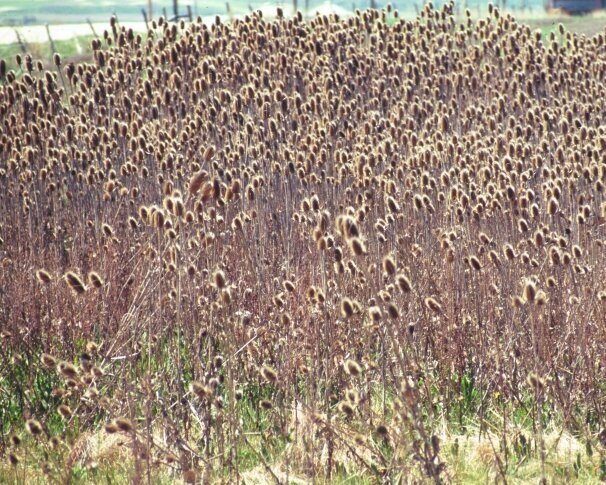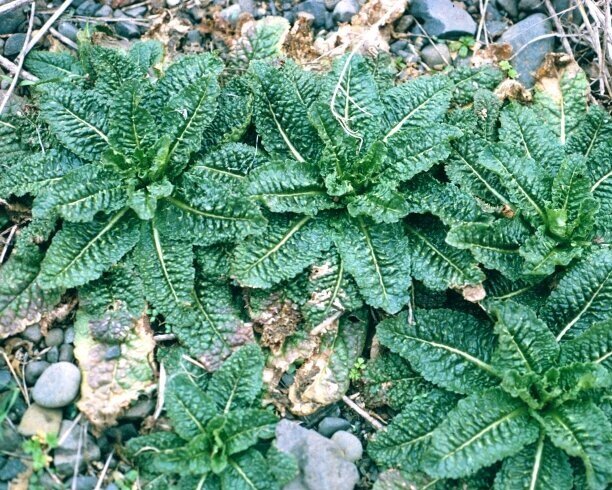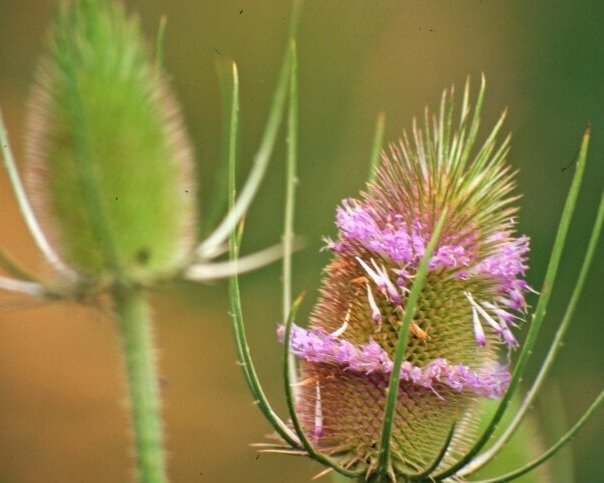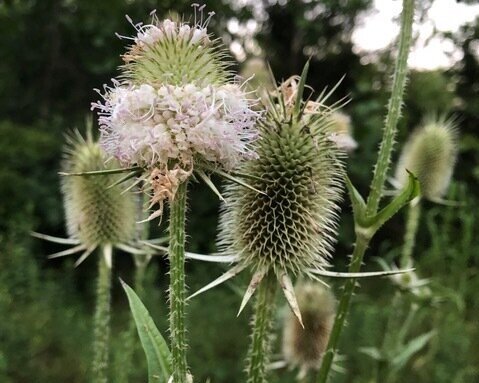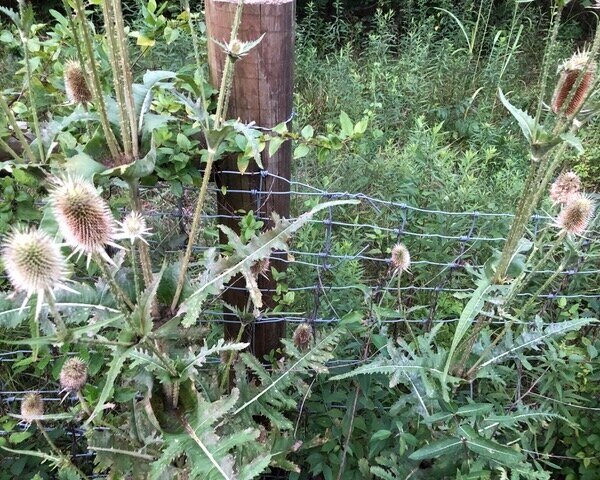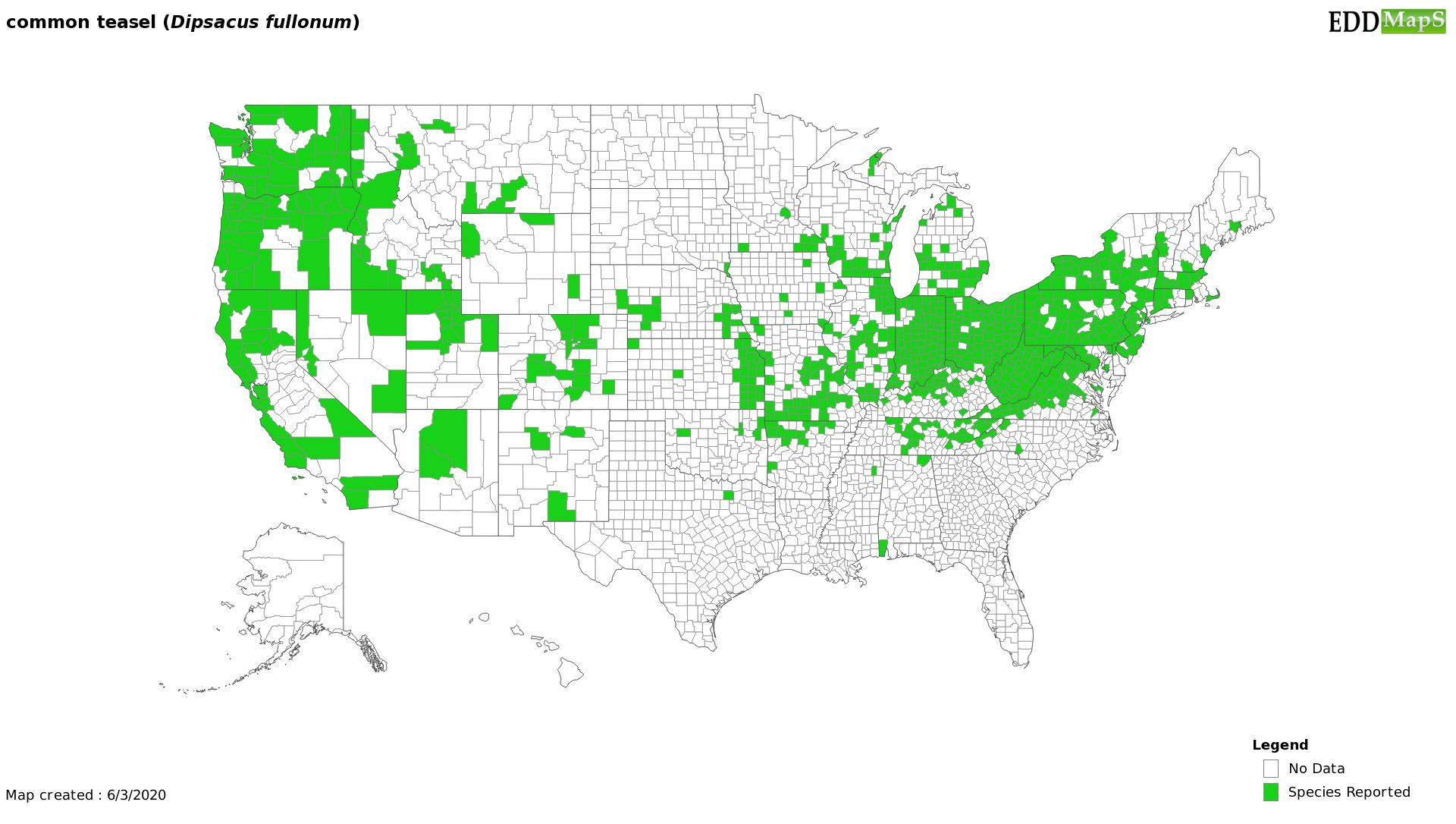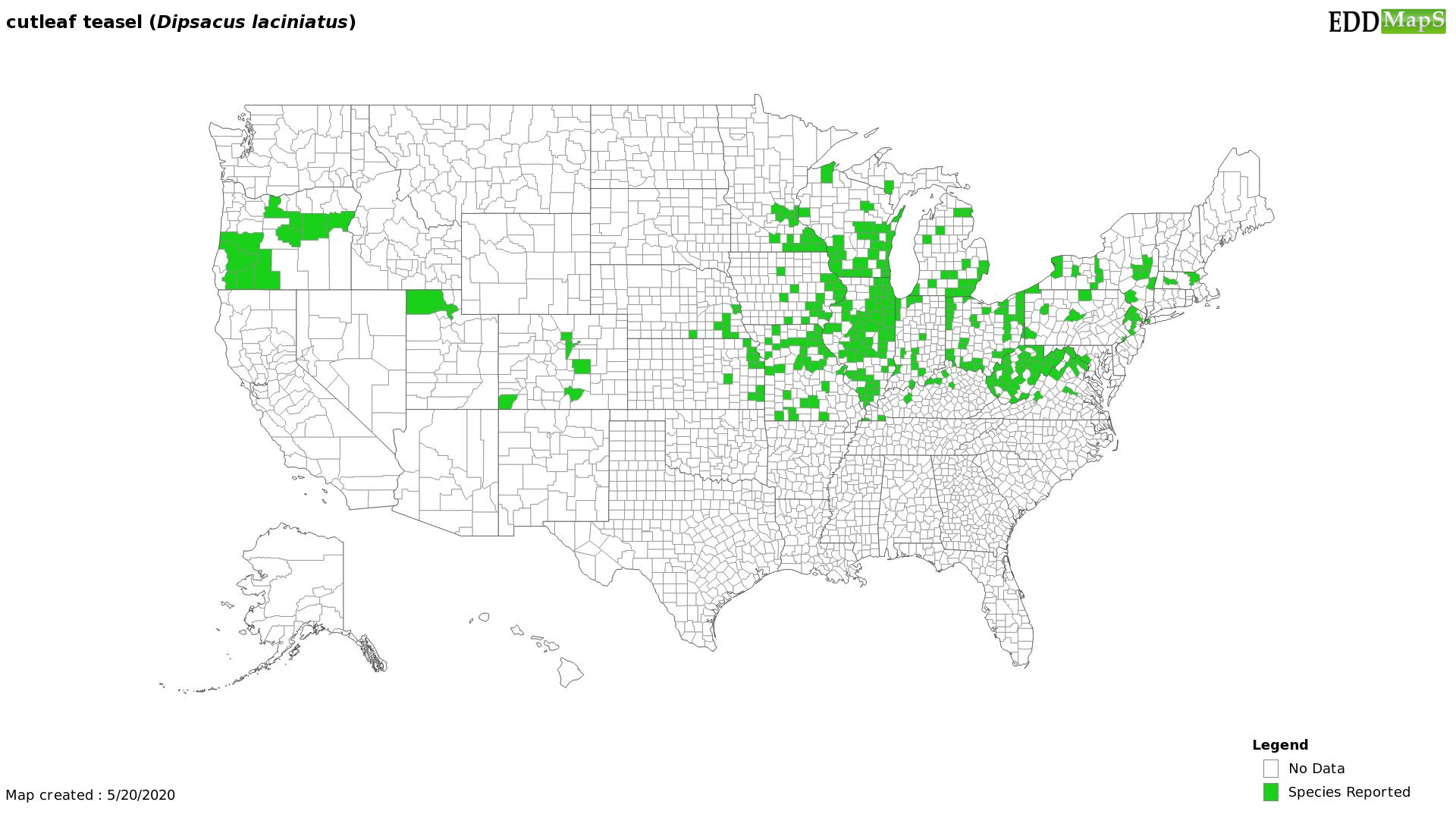December Invasive Plant of the Month
SICIM Email
Common & Cutleaf Teasel (Dipsacus fullonum L. and D. laciniatus L.)
Although sometimes called biennials, teasels are better described as monocarpic perennials. The plants grow as basal rosettes for a minimum of one year (and frequently is longer) then send up a tall flowering stalk and die after flowering. The period of time in the rosette stage varies depending on the amount of time needed to acquire enough resources for flowering to occur. Both common and cutleaf teasel are from Eurasia and grow in open, predominately disturbed, habitats. They can invade prairies, savannas and wet meadows and form extensive monoculture stands. Cutleaf teasel is more common in the northern half of Indiana while common teasel is widespread throughout the state. Both species are regulated under the DNR Terrestrial Plant Rule which prohibits their sale or trade in Indiana.
IDENTIFICATION & BIOLOGY: During the rosette stage leaves vary from somewhat ovoid in young plants to large and oblong leaves that are quite hairy in older rosettes. During the rosette phase, teasel develops a large tap root. The tap root may be over 2 feet (0.6 meter) in length and 1 inch (2.5 cm) in diameter at the crown.
Cut-leaved teasel blooms from July through September, and common teasel blooms from June through October. Flowering plants have large, oblong, opposite, sessile leaves that form cups (the cups may hold water) and are prickly, especially on the lower midrib. Stems also are prickly. Teasel's unique inflorescence makes the plant readily identifiable when blooming. Flowers are small and packed into dense oval-shaped heads. The heads (inflorescences) are subtended by upcurved bracts and are located terminally on the flowering stems. Cut-leaved teasel usually has white flowers while common teasel generally has pink-purple flowers, though occasionally white. Flowering stems reach 2-8 feet in height.
Teasel seeds are typically gravity dispersed and germinate near the parent plant. However, seeds may be transported by attaching to animals or along waterways, including irrigation ditches, streams, and rivers. Seeds are also spread by vehicles and/or equipment such as mowers used along highway right-of-way.
HABITAT & DISTRIBUTION: Teasel grows in open sunny habitats, ranging from wet to dry conditions. Optimal conditions seem to be mesic habitats. Teasel sometimes occurs in high quality prairies, savannas, seeps, and sedge meadows, though roadsides, dumps, and heavily disturbed areas are where they are most common.
ECOLOGICAL THREAT: Although teasel is not known to have allelopathic properties, it is an aggressively competitive species that has the capacity to take over prairies and savannas if allowed to become established. Lack of natural enemies allows teasel to proliferate. An opening within the vegetation coupled with light soil disturbance is an invitation for invasion. Its taproot allows access to nutrients and soil moisture deeper within the soil profile. Teasel’s biennial life history allows it to claim space within the plant community while it stores resources for reproduction. The stored resources result in increased seed production and greater germination success. A single, large plant can produce up to 2,000 seeds that can remain viable in the soil for at least two years. If left unchecked, teasel can quickly form large monocultures excluding all native vegetation, which reduces forage, wildlife habitat, and biodiversity. Cut-leaved teasel is more aggressive than common teasel.
CONTROL:
Prevention - Prevention and early detection are the best management tools for teasel. Management should focus on maintaining healthy native plant communities and managing teasel before it can produce seed. Priority should be given to monitoring for teasel and eradicating small, new, and isolated infestations that become established on otherwise healthy sites.
Manual - Individual rosettes can be removed using a dandelion digger; removal of the entire root is essential to eliminate re-sprouting. Flowering stalks may be cut down once the plant has initiated flowering, but if cut too soon plants may send up new flowering stalks. It has been shown that seeds will continue to develop and mature even after cutting. To prevent seed dispersal, the cut flower stalks should be removed from the site.
Chemical – Foliar application of herbicides is effective and useful when mechanical treatments are not feasible. Herbicide, such as glyphosate, triclopyr, or clopyralid, should be applied to the rosette stage. In natural areas, application during the late fall or early spring will result in less harm to non-targeted species.
IMPORTANT: The pesticide label is the law! When using any chemical control, always read the entire pesticide label carefully, follow all mixing and application instructions and use all personal protective gear and clothing specified. Contact the Office of Indiana State Chemist (OISC) for additional pesticide use requirements, restrictions or recommendations.
Fire & Cultural – Late spring burns may be useful for controlling teasel before it becomes dense. Once an area is densely covered with teasel rosettes, fire does not carry well through the teasel-infested area. Prescribed burns would likely work best in conjunction with other control methods indicated above.
Maintenance - The area should be monitored periodically for teasel invasion. New plants should either be dug up or flowering stems should be cut and removed as described above. Periodic fall or late spring prescribed burns should also help with continued control.
TEASEL HANDOUTS:
https://bugwoodcloud.org/mura/mipn/assets/File/Midwest%20Invasives%20Fact%20Sheets/PDF/teasel.pdf
https://www.fs.usda.gov/Internet/FSE_DOCUMENTS/stelprdb5410129.pdf
TEASEL REFERENCES & OTHER RESOURCES:
https://www.illinoiswildflowers.info/weeds/plants/teasel.htm
https://www.illinoiswildflowers.info/weeds/plants/cutleaf_teasel.htm
https://www.fs.fed.us/database/feis/plants/forb/dipspp/all.html
https://invasive-species.extension.org/dipsacus-fullonum-common-teasel/
https://invasive-species.extension.org/dipsacus-laciniatus-cutleaf-teasel/
https://www.minnesotawildflowers.info/flower/cut-leaf-teasel
https://www.oardc.ohio-state.edu/weedguide/single_weed.php?id=98
https://www.invasive.org/search/action.cfm?q=common%20teasel
https://www.invasive.org/search/action.cfm?q=cutleaf%20teasel
GENERAL RESOURCES:
https://indiananativeplants.org/invasive-plants/2019-terrestrial-invasive-plant-rule/
https://www.invasive.org/gist/products/handbook/methods-handbook.pdf
#CommonTeasel #CutleafTeasel #Dipsacus #IndianaInvasivePlants #TerrestrialPlantRule #IndianaInvasivesInitiative

